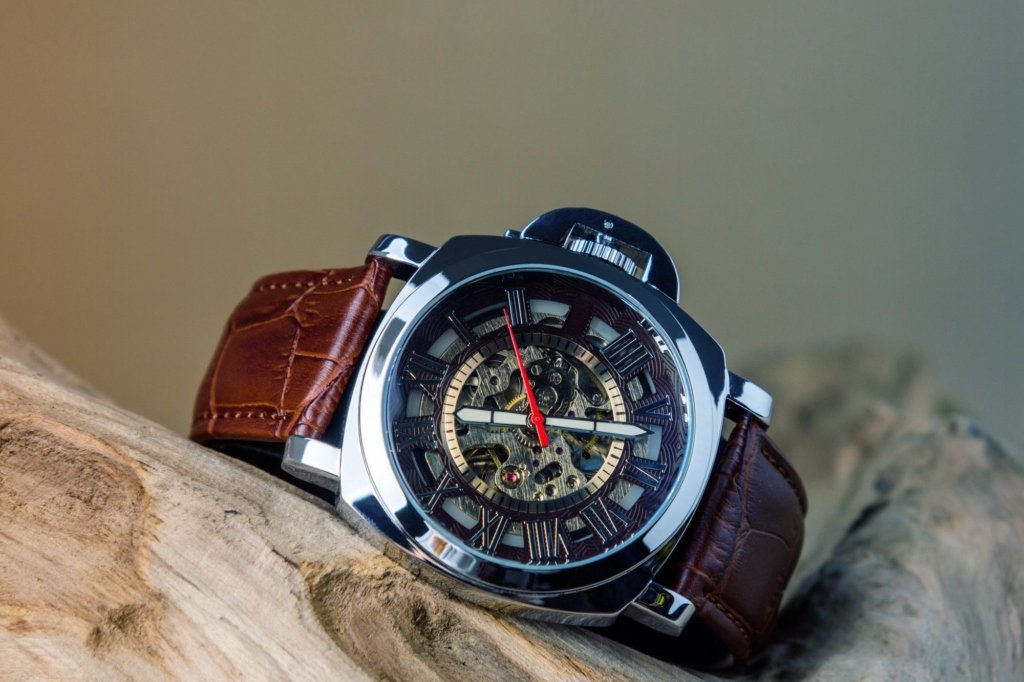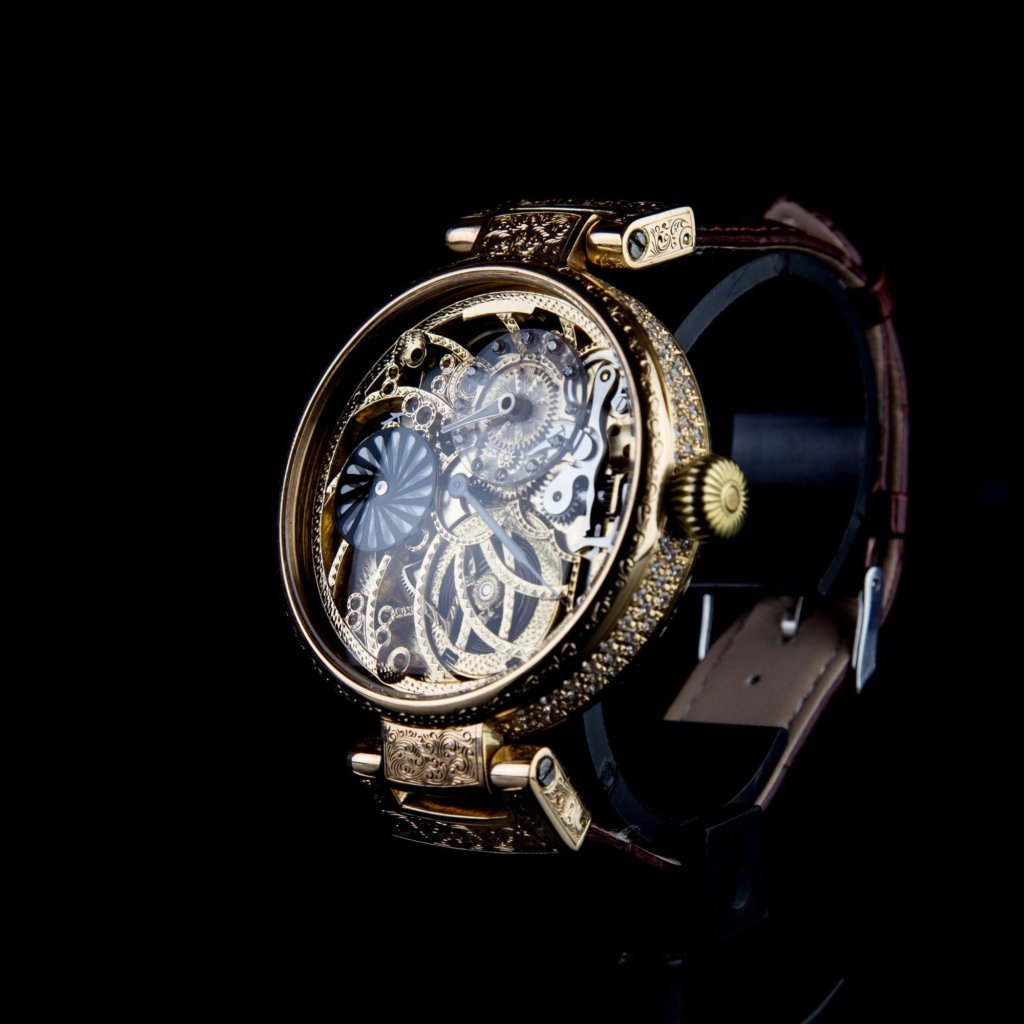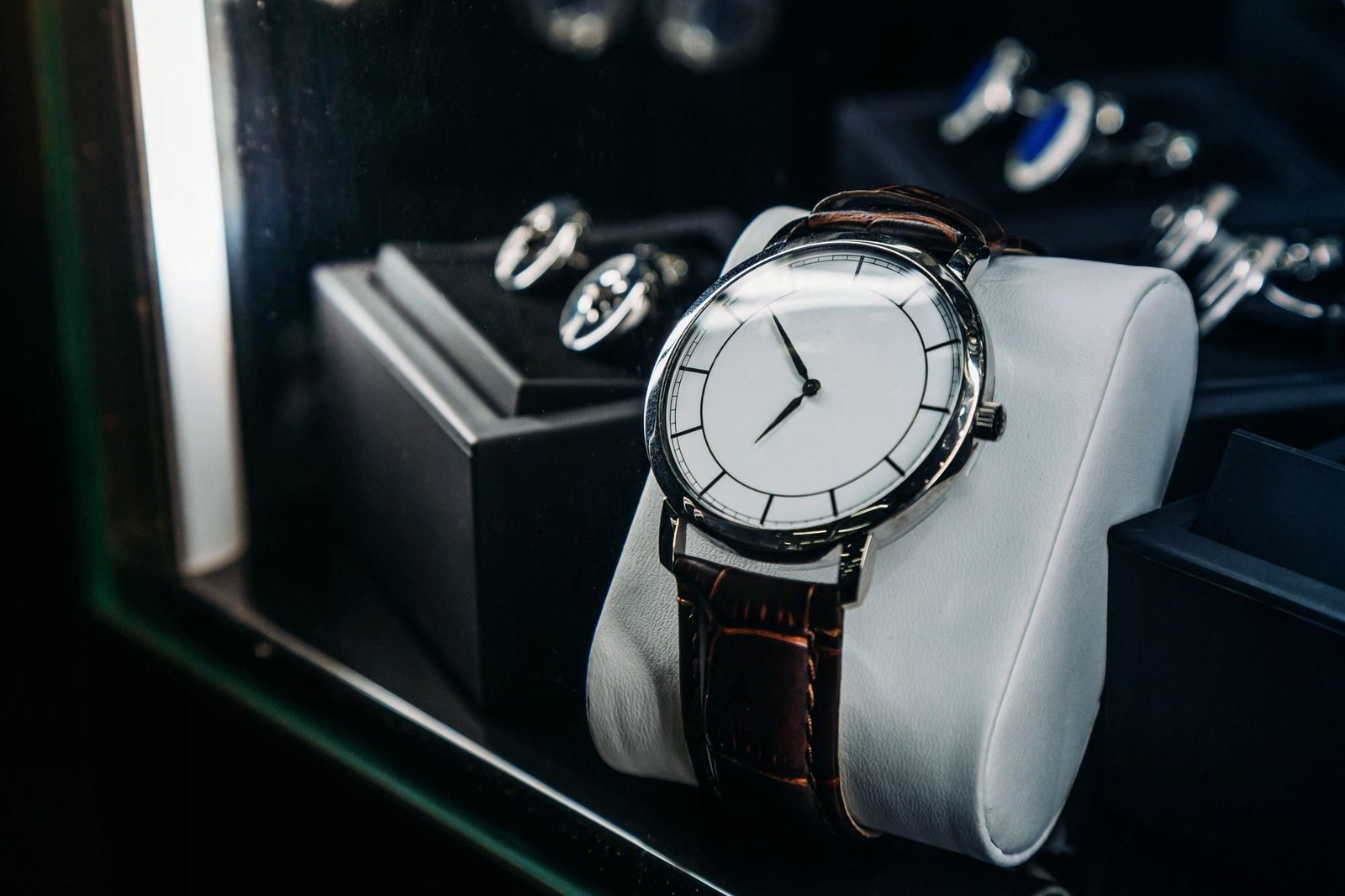“how do watch winders work” is a common thinking for those who use an automatic watch. People have long cherished automatic watches for their mechanical precision and artistry, but their accuracy can only improve with proper winding. Watch winders have become an essential accessory for automatic watch enthusiasts, ensuring their timepieces remain wound and accurate even when not being worn.In this comprehensive guide, we’ll explore the inner workings of watch winders. How they benefit automatic watches, and how to choose the perfect watch winder for your timepiece collection.
What are Automatic Watches?
A. Definition and history of automatic watches
Automatic or self-winding watches are mechanical timepieces that harness the wearer’s wrist movement to wind the mainspring, which powers the watch. Swiss watchmaker Abraham-Louis Perrelet introduced this innovative technology in the 18th century, and it has heretofore been refined and improved over time.
B. Mechanism of self-winding in automatic watches
The self-winding Mechanism in an automatic watch relies on a weighted rotor that pivots around the watch’s movement. As the wearer pushes their wrist, the rotor oscillates, transferring energy through gears to the mainspring. This winding process keeps the watch running continuously as long as it’s worn or otherwise subject to movement.
C. Importance of winding for the watch’s accuracy and longevity
Proper winding is crucial to an automatic watch’s accuracy and longevity. A fully wound mainspring provides consistent power, ensuring the watch runs smoothly and maintains accurate timekeeping. Conversely, a partially wound mainspring can lead to reduced accuracy and potential damage to the delicate internal components. Therefore, keeping your automatic watch wound, Maintaining the watch even when you’re not wearing it is essential.

Watch Winders: A Crucial Accessory for Automatic Watches
A. What is a watch winder?
A watch winder is an electrically powered device designed to keep automatic watches wound when not wearing them. By mimicking the motion of a wearer’s wrist, the watch winder ensures that the watch’s mainspring remains fully incorporated. Maintaining its accuracy and prolonging its life.
B. Different types of watch winders
Single-watch winders: Designers create these winders to hold and wind one watch at a time. They are perfect for individuals with only one automatic watch or those who want to keep their favourite timepiece wound and ready to wear.
Double watch winders: Double watch winders can accommodate and wind two watches simultaneously, making them ideal for couples or watch collectors with a growing collection.
Multi-watch winders: Multi-watch winders are designed for serious collectors and can wind multiple watches simultaneously. These winders can range from accommodating a handful of watches to large, cabinet-style winders holding dozens of timepieces.
Wall-mounted watch winders: Designers intend these winders for wall mounting, providing an attractive display option for your watch collection while keeping them wound.
C. Materials and design options for watch winders
Watch winders come in various materials and designs, ranging from simple plastic models to luxurious wood and leather options. Aesthetic preferences and budget will typically dictate the watch winder materials and design choice.
The Science Behind Watch Winders
A. How do a watch winder work
Motor and gears: The heart of a watch winder is its motor and gear system, which provides the power and motion needed to wind the watch. The motor rotates the gears, which in turn rotates the watch holder, simulating the movement of a wearer’s wrist.
Rotation and turns per day (TPD): Watch winders can be programmed to rotate at specific intervals, measured in turns per day (TPD). TPD refers to the number of rotations the watch winder completes in 24 hours. Different watch models have varying TPD requirements, so adjusting your watch winder to match your watch’s specific needs is essential.
B. Why are watch winders necessary for automatic watches
Automatic watches rely on consistent motion to maintain their power reserve and ensure accurate timekeeping. When not worn for extended periods, the watch’s power reserve can deplete, causing the watch to stop and potentially leading to internal damage. A watch winder keeps the watch wound and running, protecting the intricate internal components and maintaining its accuracy.
C. How watch winders help maintain accuracy and reduce wear
By keeping the watch wound and running, watch winders help maintain the watch’s accuracy and reduce wear on the internal components. A fully wound mainspring ensures a consistent power supply, which translates to accurate timekeeping. Additionally, keeping the watch running reduces the risk of lubricants inside the watch congealing, which can cause excessive wear on the internal components.
Selecting the Right Watch Winder for Your Timepieces
A. Assessing your watch collection
Before choosing a watch winder, evaluate your watch collection to determine how many watches require winding and their specific winding requirements. Consider the size of your collection and whether it’s likely to grow in the future, as this will impact the type of watch winder you’ll need.
B. Understanding your watch’s winding requirements
Watch models have varying winding requirements, including TPD and rotation direction (clockwise, counterclockwise, or bi-directional). Consult your watch’s manual or contact the manufacturer to determine its specific requirements.
C. Choosing a watch winder based on TPD, rotation direction, and noise levels
Select a watch winder that you can adjust to match your watch’s TPD and rotation direction requirements. Additionally, consider the noise level of the watch winder, as some models can be quite loud, which may be disruptive if placed in a bedroom or quiet space.
D. Evaluating design, materials, and price
Consider design, materials, and price factors when choosing a watch winder. Aesthetic preferences and budget will typically dictate the watch winder materials and design choice. Additionally, consider the reputation and warranty offered by the watch winder manufacturer, as this can be an indicator of the product’s quality and durability.
Proper Usage and Maintenance of Watch Winder
A. How to correctly place a watch on a watch winder
To place a watch on a watch winder, open the winder’s watch holder and secure the watch in place, ensuring the watch’s back is resting against the holder’s padded surface. Close the watch holder, and make sure it’s securely fastened.
B. Setting the appropriate TPD and rotation direction for your watch
Once your watch is securely in place, set the watch winder’s TPD and rotation direction according to your watch’s specific requirements. Refer to your watch’s manual or contact the manufacturer for this information.
C. Cleaning and maintaining your watch winder
Regularly clean your watch winder using a soft, dry cloth to remove dust and debris. Avoid utilizing harsh chemicals or abrasive cloths, as these can damage the winder’s finish. Periodically examine the watch winder for signs of wear or damage and promptly address any issues to ensure the winder continues to function correctly.
D. Troubleshooting common watch winder issues
If your watch winder is not functioning properly, Refer to the user manual or seek assistance from the manufacturer. Common issues can include the watch not winding, the winder making excessive noise, or the motor not rotating.
Can watch winder do any damage to my watch?
One common concern among automatic watch owners is whether using a watch winder could cause damage to their timepieces. The good information is that, when used correctly, a watch winder should not harm your watch. In fact, it can help protect and maintain your watch’s delicate internal components.
Watch winders are specifically designed to simulate the natural motion of a wearer’s wrist, providing gentle and consistent winding to keep the mainspring fully charged. By maintaining a consistent power reserve, the watch is able to operate smoothly and accurately, reducing the risk of damage due to inconsistent power delivery or sudden jolts from manual winding.

However, it’s essential to ensure that your watch winder is set correctly according to your watch’s specific winding requirements, including turns per day (TPD) and rotation direction. Incorrect settings could cause strain on the internal mechanisms or result in overwinding, which may lead to damage over time.
To minimize the risk of damage, always consult your watch’s manual or contact the manufacturer to determine the appropriate settings for your watch winder. Additionally, invest in a high-quality watch winder with adjustable settings, which can provide better protection for your timepiece and prolong its lifespan.
Conclusion
A watch winder is a valuable investment for automatic watch owners, ensuring their timepieces maintain accuracy and longevity. By understanding the inner workings of watch winders and how they benefit automatic watches, You can confidently choose the ideal watch winder for your collection by making an informed decision.
As you explore the various watch winder options available, regard aspects such as the size of your watch collection, the winding requirements of your specific timepieces, and your aesthetic preferences and budget. Proper usage and maintenance of your watch winder will help keep your automatic watches running smoothly, providing you with years of enjoyment and accurate timekeeping.
In conclusion, watch winders play a vital role in the care and maintenance of automatic watches. Investing on a watch winder can safeguard the durability and precision of your timepieces, preserving your valuable assortment for the years ahead.
Frequently Asked Question
Q: What is a watch winder, and why do I need one?
Answer: An electrically powered watch winder actively maintains the winding of automatic watches when they’re not wearing it. It’s essential for maintaining the accuracy and longevity of your automatic watch, as a fully wound mainspring ensures consistent power, smooth operation, and accurate timekeeping.
Q: Can I use a watch winder for both automatic and manual watches?
Answer: Watch winders are specifically designed for automatic watches, which rely on wrist movement to wind the mainspring. It would be best if you winded manual watches manually by turning the crown, and they do not benefit from a watch winder.
Q: How do I know the right TPD and rotation direction for my watch?
Answer: To determine your watch’s appropriate TPD (turns per day) and rotation direction, consult the watch’s manual or contact the manufacturer. Different watch models have specific winding requirements, so setting your watch winder accordingly is crucial.
Q: Are watch winders safe for my watch?
Answer: When used correctly, watch winders are safe for your automatic watches. Designers create them to simulate the natural motion of a wearer’s wrist, keeping the watch wound without causing damage to the internal components.
Q: How frequently should I perform cleaning and maintenance on my watch winder?
Answer: It is recommended to routinely clean your watch winder with a gentle, dry cloth to eliminate dust and particles. Inspect the winder occasionally for indications of wear or harm and promptly handle any concerns to guarantee optimal performance. Refrain from using strong chemicals or rough substances, as these may harm the winder’s exterior.
Q: Can I keep my watch on the winder all the time?
Answer: While keeping your watch on the winder for extended periods is safe, we generally recommend giving your watch a break occasionally. It can help prevent excessive wear on the watch’s internal components and prolong its life.
Q: What should I consider when choosing a watch winder?
Answer: When selecting a watch winder, consider the size of your watch collection, the winding requirements of your specific timepieces, and your aesthetic preferences and budget. Additionally, consider the reputation and warranty offered by the watch winder manufacturer, as this can indicate the product’s quality and durability.



